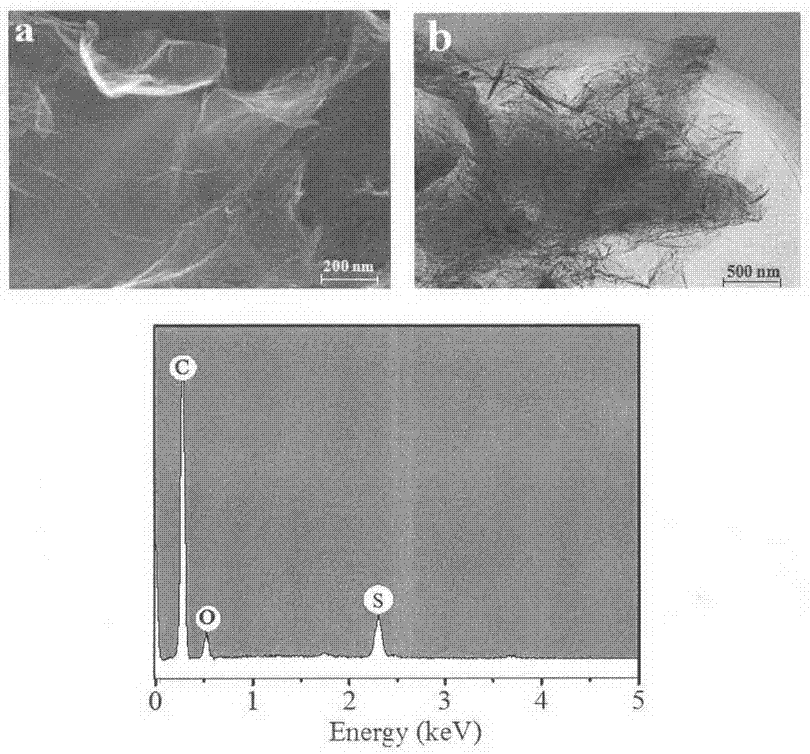Cadmium lead electrochemical detection method based on sulfur-doped graphene
A technology of sulfur-doped graphene and detection method, applied in the direction of material electrochemical variables, etc., can solve problems such as no relevant reports, and achieve the effect of low detection limit
- Summary
- Abstract
- Description
- Claims
- Application Information
AI Technical Summary
Problems solved by technology
Method used
Image
Examples
preparation example Construction
[0043] b, preparation of graphene oxide suspension:
[0044] Accurately weigh 80 mg of the graphite oxide powder obtained in step a, dissolve it in 40 mL of deionized water, make a 2 mg / mL suspension, ultrasonically disperse for 50 minutes, and adjust the pH to 7-8 with 1 mol / L potassium hydroxide solution;
[0045] c. Preparation of polysulfide / graphene composites:
[0046] Dissolve 0.385g of sodium sulfide into 7mL of deionized water to form an aqueous solution of sodium sulfide, add 0.1536g of sulfur powder, and stir ultrasonically until it becomes clear and transparent. The reaction equation is:
[0047] Na 2 S+(x-1)S=Na 2 Sx (x=2, 3, 4, 5)
[0048] Then, under the protection of nitrogen, the transparent solution was added dropwise to the graphene oxide suspension solution dispersed by ultrasound in step b, and refluxed at a temperature of 80°C for 24 hours, and the obtained solution was filtered and washed with deionized water for 3-5 Then ultrasonically disperse in 8...
Embodiment 2
[0056] By the method of the present invention to the detection of water sample:
[0057] Use laboratory tap water samples to make HAc-NaAc solution with pH=5.0, take 10mL, add heavy metals in the following amounts (μg / L): 0, 50, 100, record the peak current intensity at different concentrations, measure 3 times respectively, and then according to See Table 2 for linear equation calculation recovery rate and relative standard deviation;
[0058] Table 2
[0059]
[0060] As can be seen from the table: the heavy metal recovery rate is between 95.8%-103.8%, illustrating that the cadmium lead electrochemical detection method based on sulfur-doped graphene of the present invention can be used for the cadmium lead concentration detection in the water sample, has better results.
PUM
 Login to View More
Login to View More Abstract
Description
Claims
Application Information
 Login to View More
Login to View More - R&D
- Intellectual Property
- Life Sciences
- Materials
- Tech Scout
- Unparalleled Data Quality
- Higher Quality Content
- 60% Fewer Hallucinations
Browse by: Latest US Patents, China's latest patents, Technical Efficacy Thesaurus, Application Domain, Technology Topic, Popular Technical Reports.
© 2025 PatSnap. All rights reserved.Legal|Privacy policy|Modern Slavery Act Transparency Statement|Sitemap|About US| Contact US: help@patsnap.com



